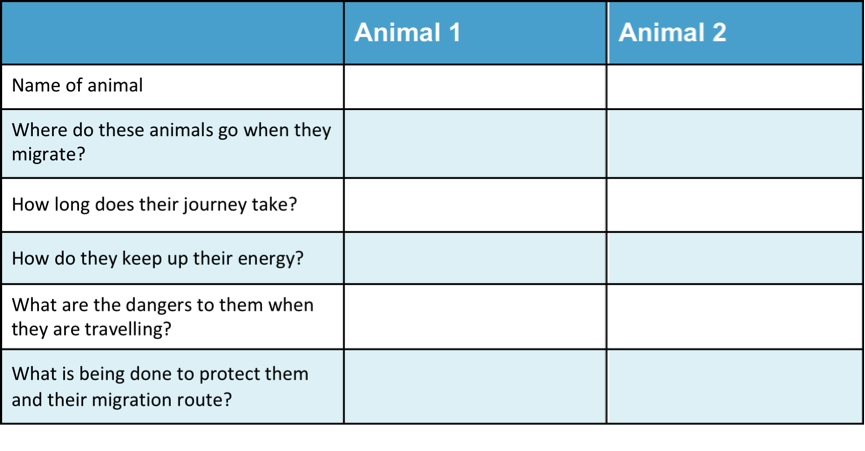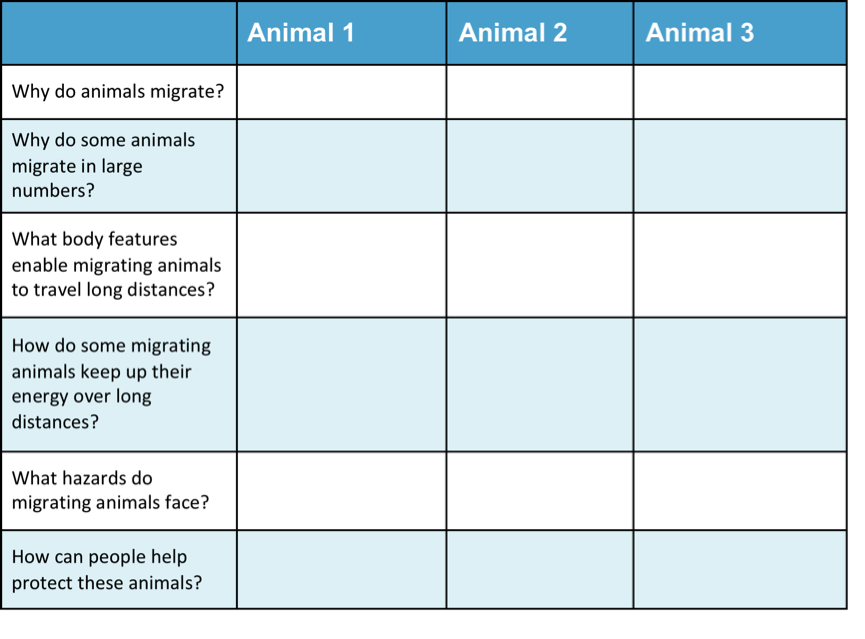Information for Teachers
Curriculum links
Australian Science Standards
BS (ACSSU44) Living things can be grouped on basis of observable features and distinguished from non-living things
SS01.2 All life forms, including human life, are connected through ecosystems on which they depend for their wellbeing
NDS (ACSHE050) Patterns, change and events in our environment
New Zealand Science Achievement Objectives
LW: There are life processes common to all living things and that these occur in different ways
LW: How living things are suited to their particular habitat and how they respond to environmental changes, both natural and human-induced
LW: Plants, animals, and other living things can be grouped into science-based classifications
NS: Scientists work together and provide evidence to support their ideas
How to search the internet
1 Keep your request short
Fewer words will give a more accurate search.
2 Choose exactly what you want
For example: Arctic Circle Climate
3 Use quotes
Double quotes around a set of words tell the search engine to consider those exact words in that exact order without any change. For example: “Arctic Circle Climate”
4 Use the plus sign (+)
If you add a plus sign (+) between words, the internet will search for all the words. For example: migrate+birds+whales+mammal
5 Use the minus sign (–) to say what you don’t want
Use a minus sign (–) to show words you do not want to appear in your results. For example: if you search for burrowing animals and do not want mammals in your search, –mammals will exclude mammals. Note that you need to put a space before the minus sign for the word to be excluded.
6 Be very clear about what you don’t want
Part 1
Ask questions and make predictions
After reading Busy Highways, you may have many questions about groups of animals that migrate.
List your questions
- Compare your list with questions that others have.
- Choose a question you would like to investigate.
- You can work alone, with a partner, or in a small group.
You may want to choose one or more of these questions to investigate
Q1. Why do some animals migrate?
Q2. Why do they travel in a group?
Q3. How do they survive during their migration?
Go to Part 2 Plan and investigate →Part 2
Plan and investigate
Do searches in the internet or in books or talk to people who can help to find the information you are looking for.
Your teacher may suggest suitable websites for further information.
Go to Part 3 Record and analyse data →Part 3
Record and analyse data
Find a way of recording your information that will allow you to see any patterns in the data.
Data Chart for Busy Highways
(Download and change to suit your information)
 Download Chart
Download Chart
Go to Part 4 Evaluate the information →
Part 4
Evaluate the information
1. Look over the information you have gathered and the patterns you have found.
What prompts some animals to migrate? Why do they need to do this?
Do these animals need to stop along the way? Why?
What might happen if there was no food for them?
2. Search for other patterns.
How do groups of animals migrate on land, in the ocean, or through the air?
What are the hazards in these pathways?
3. Make notes about what you find.
Go to Part 5 Communicate and share ideas →Part 5
Communicate and share ideas
Look over all of the information that you have gathered in your investigation.
What are the most important ideas about migrating animals?
Make a chart showing the most important ideas.
 Download Chart
Download Chart
← Return to menu
